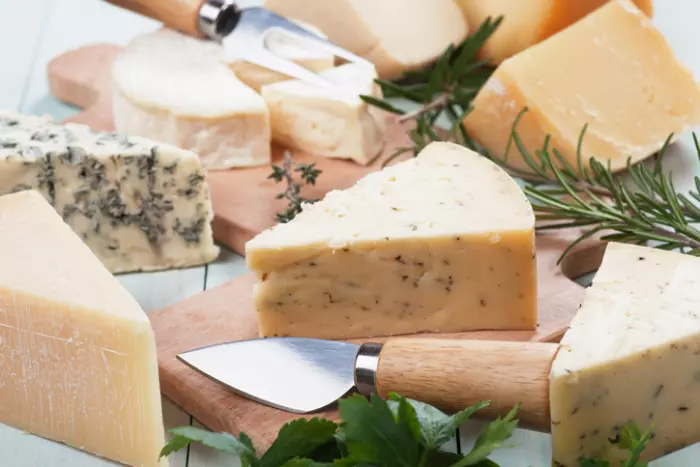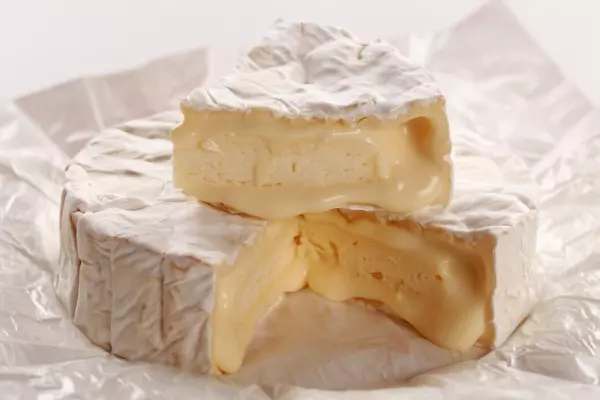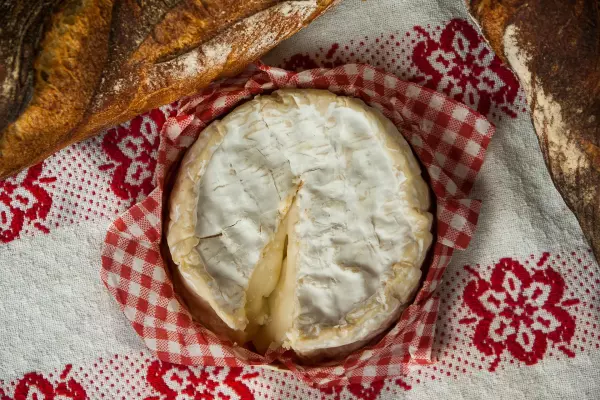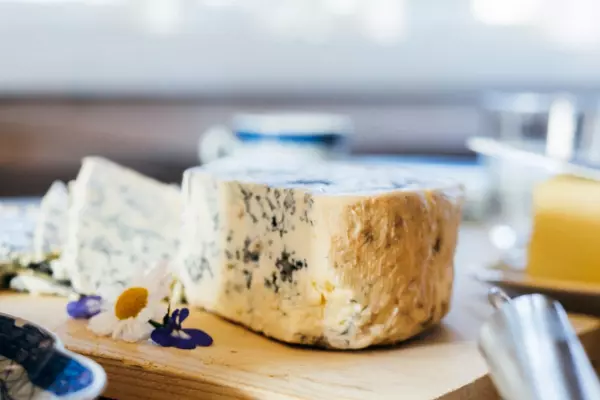The diversity of cheese is endless but it is at its best when served simply with a bottle of wine or cider, some crusty bread and dried fruit, nuts, or crisp apples and pears. It makes a wonderful lunch, snack, aperitif, or a sensational end to dinner. The possibilities are limited only by the seasons, your imagination, your budget, and where you live. Most supermarkets don’t sell artisan cheese so if you don’t have a farmers’ market or a good deli nearby, consider buying online.
I really don’t like the habit of offering cheese as an hors d’oeuvre before lunch or dinner. Instead, it should be served as the focal point of your lunch or after the main course. Please don’t serve cheese after dessert – this is a very English habit. The reason Continental Europeans serve it before pudding is that they finish the wine from the main course with cheese, then have a sweet wine with the blue cheese and with dessert. Wine lovers would never dream of going from red to sweet and back again.
Your starting point to creating a memorable cheeseboard is ensuring a variety of shapes, colours, textures, and strengths of flavour, which means offering a mix of the seven types of cheese. Typically, I serve three or four cheeses from different categories and allow around 75-150 grams per person, depending on whether it’s a snack or main course. Ideally offer at least one goat, ewe, or buffalo milk cheese; if you have more than eight people, or it’s for lunch, go mad and offer all seven types. One superb cheese is better than three or four miserable wedges. Add a small sprig of fresh herbs, wildflowers, seasonal leaves, or my favourite accompaniment - a fig salami from Te Mata Figs in Hawke's Bay, to the cheeseboard.
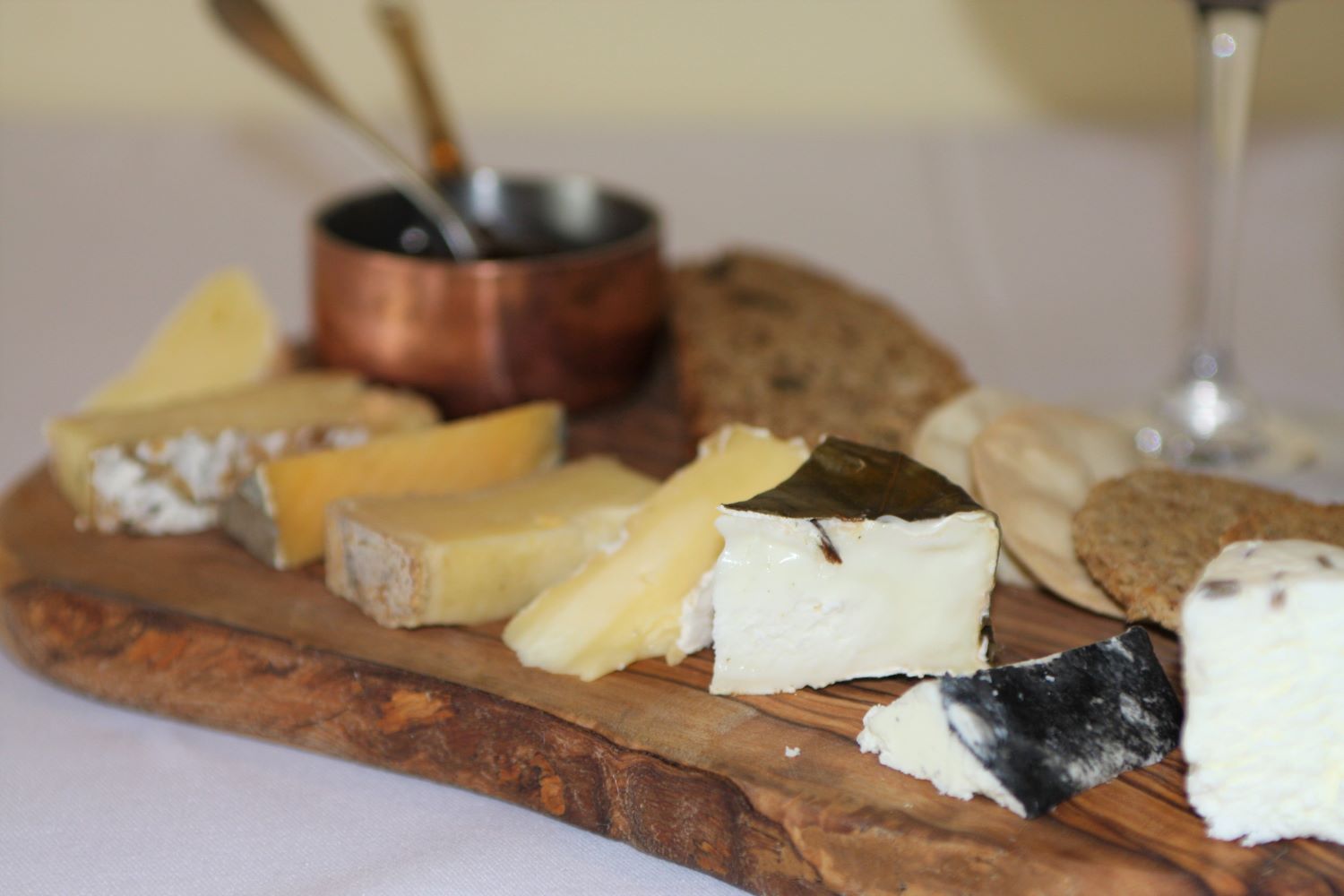
Don’t let your enthusiasm overcrowd the cheeses. Leave room for people to see, admire and cut them. Refrain from stacking the cheeseboard too high with added extras so the cheese is barely visible, and piles of cubed cheese went out with the ark. Let the cheese stand in all its glory or create elegant, individual plates. And by all means remove some of the rind from hard cheese and blue cheese (as it might be overpowering) before serving.
Cheese is at its best at room temperature – about 22C. It takes up to 20 minutes for small wedges of a 250-gram camembert to reach this point, and an hour for a 500-gram wedge of cheddar. You should always tell your guests if they are having a cheeseboard, so they leave some room or skimp on their mains in anticipation.
When cheese is the main course, I serve it with chargrilled vegetables, salads, breads, pickles, chutneys, dried fruit, fresh apples or pears, and, if you can find them, pickled walnuts. They look and taste extraordinary. But if served as antipasto or after the main, then maybe one chutney, or fresh or dried fruit, is enough. Celery is served only with blue cheese, and grapes are served only if you aren’t drinking wine. Crusty or fruity bread rather than biscuits allows you to experience the feel of the cheeses better. Crackers are ideal for spreadable cheeses or blues.
And what do you serve it on? An elegant wooden board, a clean chunk of driftwood or a wicker basket lined with a linen cloth gives the cheese a fresh look. Slate looks great, and marble or granite is marvellous but very heavy! Preparing individual plates with small, thick chunks and wedges is the most economical and efficient way to serve cheese, but not so dramatic in presentation.
The union of cheese and wine has moved writers to fill endless columns with riveting descriptions of distinguished or disreputable marriages and which combinations make the senses whir and spin while others definitely do not. As a general rule white- or pale-rinded cheeses prefer white wines, darker rinds prefer richer whites or reds, and the blues love rich reds or sweet or off-dry whites.
Wisdom of the day
Use a strong, hard cheese to make a cheese sauce – it may be more expensive but you use significantly less, and if you use a mild cheese, no matter how much you use it will always be mild.
Juliet Harbutt is a Master of Cheese and founder of Hunter Gatherer Tours in Hawke’s Bay
Cheese questions welcome.


